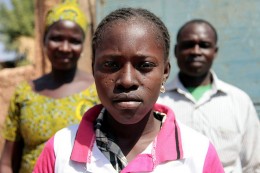
Feminine genital mutilation also known as FGM is a traditional practice which has been there for decades. Many people in the UK do not know what FGM is and what it consists of. It is only recently that it has gained its spotlight in the media through the persistence of campaigners such as Fahma Mohamed and Leyla Hussein.
The main debate now is that the process and dangers of FGM should be taught is primary and secondary schools as Michael Gove, the Secretary of State Education has confirmed that he is sending out letters to make teachers aware of FGM.
This unimaginable practice involves cutting off a girl’s external sex organs. The horrible fact is that girls as young as three are circumcised with various equipment, it is worse in third world countries where they use broken glass bottles and blunt knives.
In the UK it’s carried out in communities originally from Africa , Asia and the Middle East. Most girls in the UK are taken back home during the holidays to have it done.
At the last count an estimated 66,000 women and girls in the UK were victims although experts think the true figure is much higher. Statistics obtained by the BBC suggest that almost 4,000 FGM patients have been treated since 2009. The Metropolitan police say they have had only 161 referrals since 2010.
Elisabeth Obeng spoke to Muna Dirrir, a student from the University of Essex who’s mother and grandmother have been through the practice and Miss Patten a teacher from The Sydney Russell School to find out their views on FGM and the current debate.
[audio:https://archive.org/details/FgmPackage]